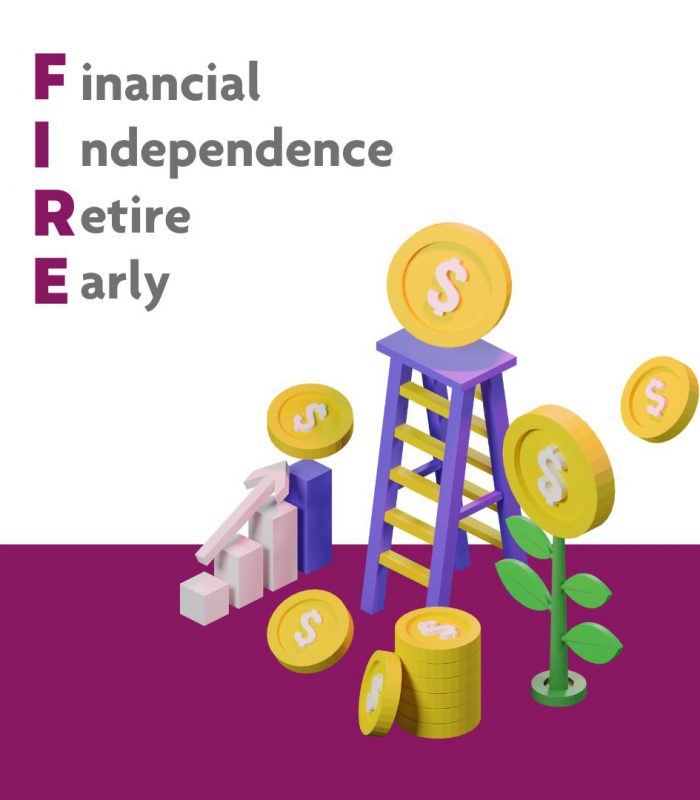When it comes to investing, there isn’t a one-size-fits-all approach. Every investor will need a different investing strategy depending on their financial goals, current financial situation, and risk appetite.
While each person may have their own unique investing strategy, we can broadly categorise these strategies based on your time horizon, how actively your investments are managed, and how frequently you’d like to invest.
Short-Term versus Long-Term Investing
A common question that may cross your mind when you start investing is how long should you stay invested. This is highly dependent on your financial goals. Do you need to use the money in 12 months, or in 5 years? Are you setting money aside for a home down payment in 1 year or investing for your retirement in 40 years?
Identifying your investment time horizon can help you align your investments with your goals.
What Is Short-Term Investing?
If you’re saving and investing for a financial goal that’s 1 year or less, you can consider investing in short-term investments. This could be saving up for a wedding, or emergency fund, home down payment or home renovation fund, and even to pay off your credit card debts.
Short-term investments tend to have lower returns compared to long-term investments. Despite the lower returns, short-term investments as indicated in below examples tend to be stable options as your investment value does not fluctuate as much as long-term investments. With short-term investments, you know you can have easy access to the money when you need it, reducing the risk of losing a sum due, giving you some peace of mind.
Some examples of short-term investments are:
- Fixed Deposit
- Certificate of deposits
- Money market accounts/funds
- Short-term sukuk or bond funds
- Savings accounts
- Treasury bills
What Is Long-Term Investing?
A long-term investment is often regarded as an investment that is held for around 3 to 5 years or more. It is those investments that you invest into and hold for the long-term, letting it bring you returns. This type of investment runs parallel with your long-term financial goals such as children’s education funding, or retirement goals.
The returns of long-term investments tend to be higher because the returns will be re-invested over a long period of time. But your investments could be exposed to more volatility in the short-term. This means that you may see the value of your long-term investments go down if there was an unexpected event in the market, or an economic downturn.
However, long-term investors tend to ignore the market sentiments as they know they’re in it for the long run. When an investor buys a stock of a company, they see the value of growth of the company in the long run instead of expecting a quick return.
Some examples of long-term investments are:
- Stocks
- Real estate
- Mutual funds
- Exchange-traded funds (ETFs)
- Sukuk or bonds
- Retirement plans
If you’re just starting as a long-term investor, you may be tempted to sell off your investments when the market drops. That’s when having a diversified portfolio can help reduce the impact of market sentiments on your overall investment value, helping you stay invested and positioning your portfolio for further growth in the future.
Here are some tips for a successful long-term investment strategy:
- Keep a diversified portfolio
- Study your current financial strategy
- Don’t chase a stock tip (e.g. investing based on what someone else says)
- Review your portfolio with a licensed Financial Planner
- Be open-minded and have a long-term approach
Active versus Passive Investing
When planning your investments, you might also consider between actively managing your investments (or investing in actively managed funds), or passive investing.
What Is Active Investing?
Active investing is when an investor has an active management system towards their investment, meaning that there are constant activities of buying, selling, and trading over a short period.
Active investors are usually on the lookout for returns that beat the market average return, meaning they are looking to earn more profit. For example, in stock investing, an active investor will monitor the price movement of stocks on a daily basis. The downside of active investing is that it is a riskier option and the investment transaction costs are higher.
In terms of mutual funds, actively managed funds will try to pick stocks in an attempt to obtain higher returns. These funds provide the chance to beat the market, but they usually charge a greater fee.
What Is Passive Investing?
Passive investing adopts the same approach as a long-term investment which is to set aside your investments and forget about them.
Passive investors don’t try to time or beat the market. Instead, they are meant to earn the market return. A common passive investment option is investing in an index fund (a type of mutual fund)
One of the aims of passive investing is to prevent frequent purchasing and selling of securities, resulting in lower expenses. Due to the ease with which this approach may be implemented, this form of investment is popular among the general public.
Dollar-Cost Averaging (DCA) versus Lump-Sum Investing
If you’ve had any experience in investing, then the term dollar-cost averaging should not seem alien to you. However, what exactly does dollar-cost averaging mean? Is this approach necessarily better than lump-sum investing?
What Is DCA?
Dollar-cost averaging is essentially investing in several intervals over a period of time. This means that you’d buy into an investment regularly and with smaller investment sums regardless of what the price is.
With this method, you aren’t investing all of your money in any investment at once and risking your portfolio’s value plummeting. And DCA helps you get into the habit of making regular, consistent investments.
What Is Lump-Sum Investing?
Lump-sum investing on the other hand is when you invest all the money you have into the investment of your choice. Say you’ve been contemplating investing in the stock market, with lump-sum investing, you don’t wait to invest, you simply put all your money in the market at once.
Investors with a higher risk appetite prefer this approach because it may mean that they could earn more. A 10% return of a $100 investment is $10 but a 10% return of $100,000 is $10,000.
While there’s an opportunity to earn more in absolute numbers through lump-sum investing, you would also be exposing your investments to more volatility.
Wrapping It Up
While there is no single “correct” response to this question, there are a few things to think about when it comes to choosing an investing approach. Mainly:
- What are your financial goals? How much are you planning to save and invest for each goal, and for how long?
- How much risk are you comfortable taking with your investments? How much losses can you tolerate in the short-term?
- What is your current financial situation? Does it allow you to take more risks with your investments
One thing to bear in mind is that the future is uncertain. As an investor, you can avoid market timing by sticking to a plan. There’s no way of forecasting how the market will react in the future. That’s why it’s critical to devise an investment strategy, put it on paper, and stick to it.
Share what you've learned
You may also enjoy

What to Do With Your Annual Bonus

ESG vs SRI Investing



